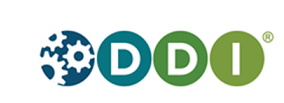Tutorial: Generating DDI 4 in the Language of your Choice
Model Driven Architecture for Metadata Standards in Practice
Tutorial at EDDI19, the 11th Annual European DDI User Conference, December 2, 2019, Tampere, Finland
Joachim Wackerow, GESIS – Leibniz Institute for the Social Sciences
Half-day tutorial, target group: software developers
This tutorial provides the knowledge and skills on how a syntax representation of the DDI 4 UML model can be generated in any language. The focus is on the DDI 4 Core model, which is in many important respects independent from the social science domain and therefore suitable for cross-domain purposes (the public review of DDI 4 Core is planned for the beginning of 2020)
The first part of the tutorial gives an overview of the model-driven approach, the model itself, used UML modeling techniques, and the generation of representations in XML Schema (for XML instances) and in OWL (for RDF instances). It describes how the UML model can be used as basis to generate a syntax representation in a chosen language.
The second part provides time for exercises. Eclipse modeling tools are used for this purpose. Participants are encouraged to choose a language in which they wish to use DDI 4. You should bring your own laptop and be ready to install the required software (a detailed list will be provided) prior to the tutorial.
Agenda
- Part I
- Overview
- Model-driven approach
- DDI 4 Core model – UML subset and model structure
- Generation of XML Schema for XML instances
- Generation of OWL Vocabulary for RDF instances
- Approach for the generation of any syntax representations
- Part II
- Eclipse environment
- Exercises
- Page with tutorial slides
- Download of slides (right click)


